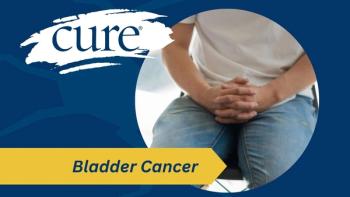
FDA Grants Opdivo Priority Review for Small Cell Lung Cancer
The Food and Drug Administration (FDA) granted priority review to a supplemental biologics license application for Opdivo (nivolumab) for the treatment of patients with small cell lung cancer with disease progression following two or more lines of therapy.
The FDA has granted a priority review to a supplemental biologics license application (sBLA) for Opdivo (nivolumab) for the treatment of patients with small cell lung cancer (SCLC) with disease progression following two or more lines of therapy, according to Bristol-Myers Squibb, the manufacturer of the PD-1 inhibitor.
The sBLA is based on data from the phase 1/2 CheckMate-032 trial, in which single-agent Opdivo led to a median overall survival (OS) of 4.4 months and a one-year OS rate of 33 percent in patients with progressive SCLC following one or more prior lines of therapy. Under the priority review, the FDA is scheduled to make its decision by Aug. 16, 2018.
“Small cell lung cancer is a highly aggressive disease, one where most patients experience relapse within a year of diagnosis. The overall prognosis for this cancer remains poor, and there have been no new treatment advances in nearly 20 years. We are pleased with this important step forward in the FDA’s consideration to expand the use of Opdivo to patients with small cell lung cancer who have received two or more lines of previous treatment,” Sabine Maier, development lead of thoracic cancers at Bristol-Myers Squibb, said in a press release.
The open-label phase 1/2 CheckMate-032 trial evaluated Opdivo monotherapy or the combination of Opdivo and Yervoy (ipilimumab) in patients with advanced or metastatic solid tumors, including SCLC. In the SCLC cohort, 216 patients with progressive SCLC following one or more prior lines of therapy were randomized to single-agent treatment or the combination at one of two doses. The primary endpoint of the study was objective response rate (ORR). Secondary outcome measures focused on OS, progression-free survival (PFS), duration side effects leading to treatment discontinuation.
In the monotherapy arm, 98 patients received Opdivo at 1 mg/kg plus Yervoy at 3 mg/kg every three weeks (N1/I3; 61 patients) or Opdivo at 3 mg/kg and Yervoy at 1 mg/kg every three weeks (N3/I1; 54 patients). After four cycles, those in the combination arm went on to receive Opdivo monotherapy at 3 mg/kg every two weeks.
In the single-agent arm, the median age was 63 years and 9 percent were 75 years or older. Thirty-one percent had platinum-resistant SCLC, and the majority had received two to three prior lines of therapy (56 percent). In the N1/I3 and N3/I1 arms, the median ages were 66 and 61 years and 11 percent and 0 percent were 75 years or older, respectively. Thirty-eight percent and 52 percent of patients had received two to three prior regimens and 38 percent and 39 percent were platinum-resistant, for the N1/I3 and N3/I1 arms, respectively.
The median OS in the N3/I1 group, was six months and the one-year OS rate was 35 percent. In the N1/I3 arm, median OS was 7.7 months and the one-year OS was 43 percent.
The median PFS was 1.4 months in the single-agent Opdivo arm. In the combination groups, the median PFS was 1.4 months and 2.6 months, in the N3/I1 and N1/I3 arms, respectively. At the March 24, 2016, data cutoff, the one-year PFS rate was 11 percent with single-agent Opdivo. In the N1/I3 group, the one-year PFS was 19 percent. The one-year PFS rate was not reached in the N3/I1 group.
The ORR in the single-agent Opdivo arm was 10 percent, and the ORRs were 23 percent and 19 percent in the N1/I3 and N3/I1 arms, respectively. Responses generally consisted of partial responses, with one complete response seen in the N1/I3 arm. Stable disease rates were 22 percent, 21 percent, and 17 percent, in the single-agent, N1/I3, and N3/I1 arms, respectively. Across arms, both platinum-sensitive and -resistant patients responded to treatment.
The median DOR was not yet reached with single-agent Opdivo. In the N3/I1 group, the median DOR was 4.4 months. In the N1/I3 group, the median DOR was 7.7 months.
Overall, 69 percent of patients were evaluable for PD-L1 expression at baseline, with 17 percent expressing the ligand on 1 percent or more of cells. Responses were seen regardless of PD-L1 expression. Sixteen patients experienced a DOR of more than six months, 50 percent of which were in the N1/I3 group.
Side effects were more common in the combination arms versus the single-agent. All-grade side effects were experienced by 53 percent of those in the monotherapy arm, with a grade 3/4 side effect rate of 13 percent. In the N3/I1 and N1/I3 arms, 74 percent and 79 percent of patients experienced side effects of any grade, respectively. Grade 3/4 side effects occurred in 19 percent and 30 percent of patients, in the N3/I1 and N1/I3 groups, respectively.
Side effects led to treatment discontinuation for 6 percent, 7 percent, and 11 percent of patients in the monotherapy, N3/I1, and N1/I3 arms, respectively. Two treatment-related deaths occurred in the N1/I3 arm from myasthenia gravis and renal failure and one death was seen in the N3/I1 arm from pneumonitis. Treatment-related limbic encephalitis occurred in two patients and resolved in one.





